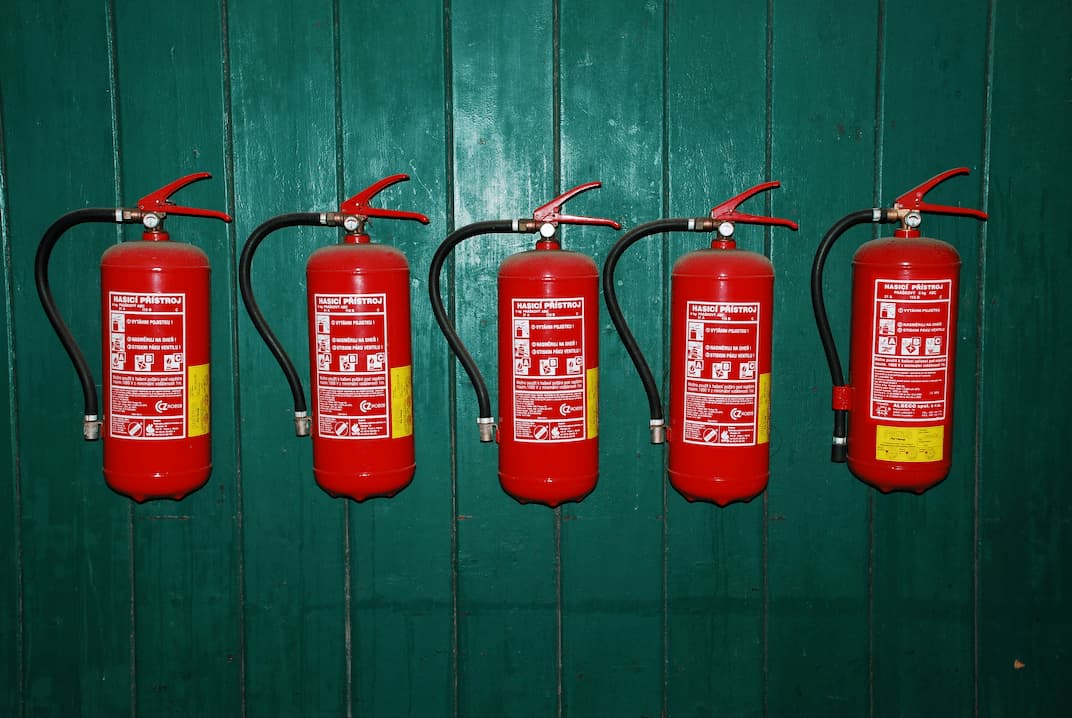There are no specific time periods in law for how often fire risk assessments must be carried out or reviewed. The law simply says that the person responsible for the assessment in your building must review it ‘regularly’ to make sure it’s up to date.
The responsible person must review the fire risk assessment if:
- there’s reason to think it’s no longer valid (for example, if there has been a fire in the shared parts of the building)
- there have been significant changes since the assessment was done (for example, major building works or more people using the building)
The assessment itself might also include a recommendation of how often it should be reviewed or updated. Reviewing an existing fire risk assessment can take less time than carrying out a new assessment, so reviews can be done more frequently.
There is guidance on fire safety in purpose-built blocks of flats. This recommended that for low-rise blocks of up to three storeys above ground, built in the last 20 years, fire risk assessments should be:
- reviewed every 2 years
- redone every 4 years
For blocks with higher risks (for example, because of the age of the building), or those more than 3 storeys high, the guidance recommends that fire risk assessments should be:
- reviewed every year
- redone every 3 years
In extreme cases (for the highest-risk buildings), the guidance recommends doing a new fire risk assessment once a year.
With the above guidance we recommend to our clients
A Basic Guide to the Fire Safety Act 2021 the Building Safety Act 2022 and The Fire Safety (England) Regulations 2022
The Fire Safety (England) Regulations 2022 / Fire Safety Act 2021
Buildings Over 11 Metres High
The legal requirement from 23 January 2023 for responsible persons for all multi-occupied residential buildings in England with storeys over 11 metres in height to:
- Undertake quarterly checks of all fire doors (including self-closing devices) in the common parts
- Undertake – on a best endeavour basis – annual checks of all flat entrance doors (including self-closing devices) that lead onto a building’s common parts
- Responsible persons to provide to residents of all multi-occupied residential buildings with two or more sets of domestic premises (that have common parts) information on the importance of fire doors to a building’s fire safety
- Prior to the Fire Safety Act 2021, flat entrance doors in multi-occupied residential buildings may not have been routinely considered as part of the fire risk. The Fire Safety Act 2021 has removed the legal ambiguity and confirms that flat entrance doors are in scope of the Fire Safety Order.
- Responsible persons to undertake best endeavour annual checks of flat entrance doors and quarterly checks of communal doors in multi-occupied residential buildings above 11m.
- If access cannot be achieved, the responsible person should gather evidence of the steps they have taken to discharge this duty. This could include correspondence between the responsible person and resident seeking permission to gain access.
Buildings Under 11 Metres High
- The regulations do not replace the existing duty for a responsible person to put in place general fire precautions in any premises covered by the Fire Safety Order, regardless of the building’s height.
- Responsible persons for residential buildings below 11 metres in height have a duty to put in place general fire precautions in these buildings, this duty includes making sure that all fire doors – including flat entrance doors – are capable of providing adequate protection.
- Responsible persons will also be required to provide residents in all residential buildings with two or more sets of domestic premises with information on fire doors.
- Information should cover the importance of keeping doors closed, that doors and self-closing devices are not tampered with and that any faults or damage to doors should be raised immediately.
- Residents will receive this information when they move into a multi-occupied residential building and then on an annual basis
Minimum requirements for inspections of fire doors
A responsible person should consider:
- if there have been any alterations or damage to a door’s glazing apertures or air transfer grille
- if there are any gaps around the door frame and that seals and hinges are fitted correctly
- that the door closer shuts the door
- that the door closes correctly around the whole frame
- that there is no visible damage (either deliberate or from wear and tear) to the door or door closer
Buildings Over 18 Meters (High Rise)
Building Safety Act 2022
The Building Safety Act names HSE as the new Building Safety Regulator in England.
The Building Safety Regulator will regulate high-rise buildings. These are buildings with 7 or more storeys or that are 18 metres or higher, and either:
- have at least 2 residential units
- are hospitals or care homes (during design and construction
The building safety reforms introduce a new regulatory framework for high-rise buildings. These include:
- BSR will become the building control authority for high-rise buildings
- giving duty-holders clear accountability and statutory responsibilities as buildings are designed, built, refurbished and occupied
- a golden thread of building information – identified, stored and updated throughout the building’s life cycle
- mandatory reporting of prescribed fire and structural safety occurrences to BSR
There will also be registers of:
- occupied high-rise buildings
- building inspectors and building control approvers
New roles
Accountable person
Part 4 of the Building Safety Act identifies new duty-holders – who will be known as ‘accountable persons’ (APs) – for residential high-rise buildings (HRBs). This will be the organisation or person who owns or has responsibility for the building. It may also be an organisation or person who is responsible for maintaining the common parts of a building, for example, corridors or lobbies.
The Accountable Person will usually be an organisation or business but could also be an individual.
The AP will have a duty to take all reasonable steps to:
- prevent a building safety risk happening, with building safety risk defined as ‘spread of fire and/or structural failure’
- reduce the seriousness of an incident if one happens
Accountable Person must:
- register existing buildings with the Building Safety Regulator (BSR), they can do this between April 2023 and October 2023
- register all new buildings before occupation
All occupied buildings must be registered by October 2023, it is an offence if a building is occupied but not registered after this date.
Storing your building’s information – the golden thread
The information you will need to manage
Your building’s information must be:
- kept digitally
- kept securely
- a building’s single source of truth
- available to people who need the information to do a job
- available when the person needs the information
- presented in a way that person can use
When the building is lived in (occupied) you will need to keep information that shows how you are assessing and managing the building safety risks.
More detail on storing information for lived-in buildings
https://www.hse.gov.uk/building-safety/regulator.htm
Information you might need
Every building is different so you may need other items of information that aren’t on this list. Some information will be obvious or easy to find, but you may have to investigate your building, or ask other people or organisations for help.
Some examples of things you’ll need to know about your building are:
- the profile of its residents
- when it was built, and the relevant standards at time of construction
- your building’s height, number of storeys, number and type of flats
- details of common parts and any underground levels
- details of any shared facilities such as utilities, car parking or access if it’s part of a wider development
- plans of the building as built (if available)
- details of the building’s construction including facade and insulation materials
- details of any refurbishment or changes to the building since it was built
- your fire prevention and protection measures
- information about its structural condition
- information about services and utilities
- maintenance and inspection details
- arrangements for managing and monitoring your building
FAQ
1. What steps should be taken to conduct a thorough risk assessment in a building?
- Identify potential hazards in and around the building
- Determine who might be harmed and how
- Evaluate the risks and decide on precautions
- Record the findings and implement them
- Review and update the risk assessment regularly, especially after any significant changes to the building or its use
2. What are the primary responsibilities of a Block manager regarding Health & Safety?
The responsibilities of a building manager consist in ensuring the building complies with all relevant H&S regulations by conducting regular risk assessments, implementing and maintaining safety procedures, and ensuring all staff and occupants are aware of emergency procedures. It is also a fundamental duty to keep records of any incidents and ensure that all safety equipment, such as fire extinguishers and alarm, are regularly inspected and maintained.
3. What is the purpose of a Fire Risk Assessment (FRA) in a building?
The purpose of a Fire Risk Assessment (FRA) is to identify fire hazards, evaluate the risk of those hazards causing harm, and implement measures to minimize or eliminate the risk. It ensures appropriate fire safety measures are in place, such as fire detection systems, alarms, and evacuation procedures, to protect occupants in a fire.
4. What are the key components of an effective Fire Risk Assessment?
- Identifying fire hazards (sources of ignition, fuel, and oxygen).
- Identifying people at risk (occupants, visitors, and those who may need assistance).
- Evaluating the risk of a fire starting and spreading.
- Implementing measures to reduce or remove risks (fire detection and alarm systems, fire doors, and escape routes).
- Recording the findings and preparing an emergency plan.
- Regularly reviewing and updating the FRA, especially after any changes to the building or its usage.

